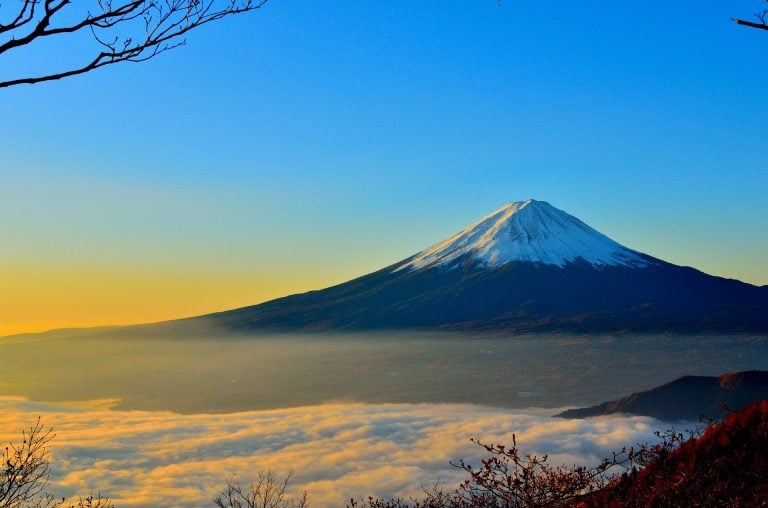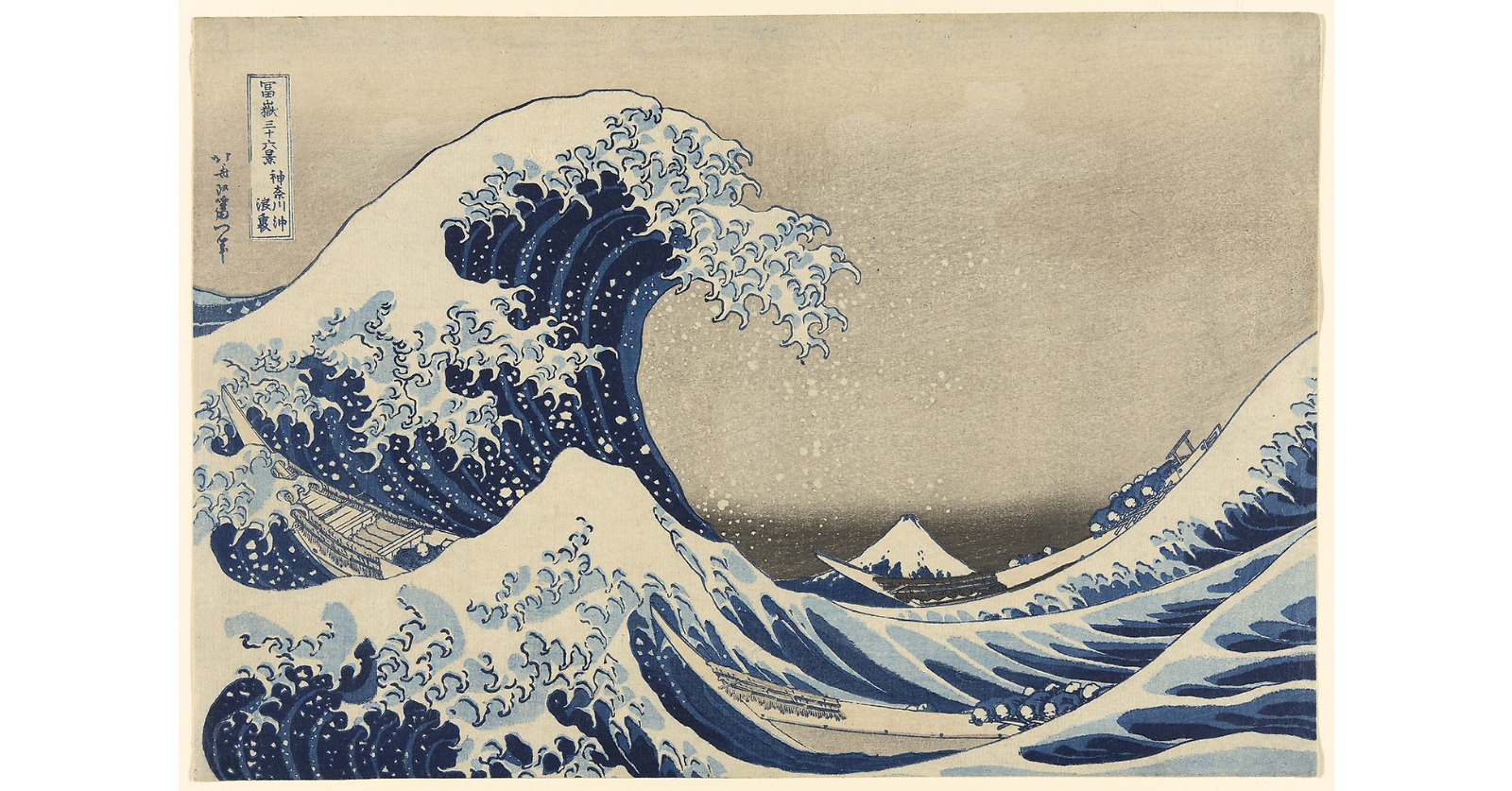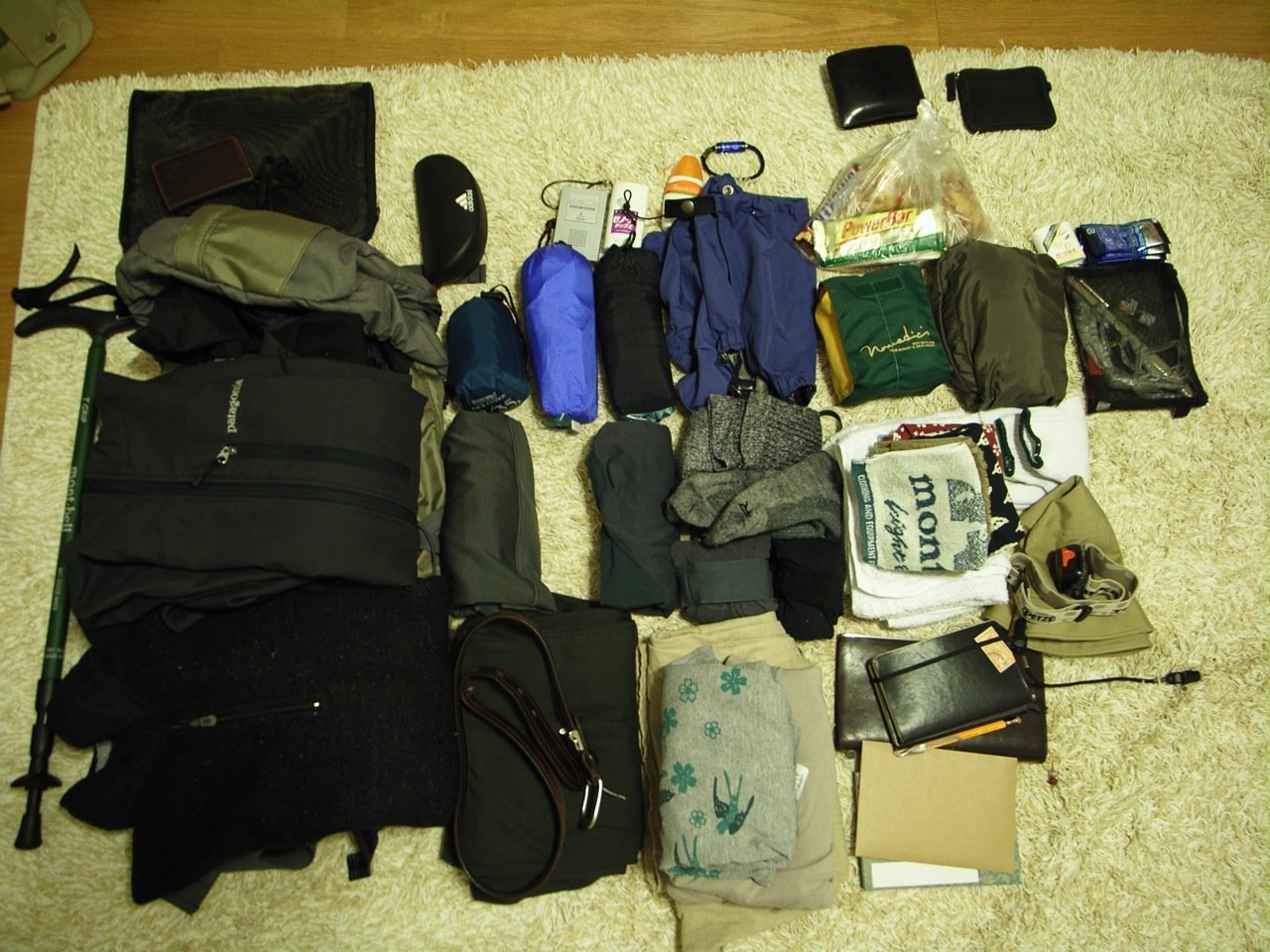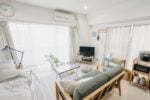
One of the most iconic images of Japan is the famous Mount Fuji, found in Tokyo’s neighboring prefectures of Shizuoka and Yamanashi. At 3,776m it is Japan’s highest peak and towers over the relatively low surrounding area. The mountain can even be viewed from Tokyo on a clear day.
Mount Fuji has a long and strong cultural importance in Japan. Many famous poems reference it, such as the Monk Saigyō’s famous waka poem;
風になびく富士の煙の空にきえてゆくへも知らぬわが思ひかな
Just as smoke drifts on the winds over Mount Fuji
Only to vanish – whither no one knows –
So, too, does my soul wander on
The world famous prints “Hokusai’s Thirty-six Views of Mount Fuji” also feature the mountain, yet again showing its prevalence and importance in Japanese cultural history.

In modern times Mt. Fuji has not lost an iota of its popularity, and in fact each year some 200,000 to 300,000 people make the ascent to the peak of the mountain. Whilst this unfortunately means the trails are heavily congested in season, it also means the mountain is highly accessible. Japan’s Mt. Fuji is probably one of the easiest over 3000m high mountains in the world to climb. With that in mind, if you have an interest in mountain climbing, beautify scenery, the great outdoors, or even just for the right to say “I climbed Mt. Fuji”, read on and learn what you should know and except when climbing Mt. Fuji.
When Can I Climb Mt. Fuji?
Technically Mt. Fuji can be climbed all year round. The official season however runs between July 1st to September 14th. Climbing outside this season should not be considered by anyone without technical experience and good quality gear. The mountain gets a lot of snow and ice, and often claims the lives of off season hikers. Climbing in season however is actually very easy and safe, so long as you follow common sense. Additionally, on season hiking means access to rental gear, as well as many mountain huts that provide a place to rest and buy food and water. Furthermore accessibility is greatly increased through bus services that only run during the season.
What Gear do I need to climb Mt. Fuji

First things first, one essential piece of gear that I often see less experienced tourists without is a good pair of boots. Mt. Fuji is by no means a technical mountain. Many tourists can and do make the ascent in nothing more than tennis shoes, but I wouldn’t want to be them the next day. The course is rocky, and the descent can be hard on your knees and ankle. Do yourself a favor and wear well-fitting boots or shoes designed for hiking.
As the mountain is over 3000 meters high, many people pack oxygen cans. Whether this is overkill or not is subjective, but oxygen is definitely not an essential item. If you feel you would be better off with it, by all means include it in your kit. However if you are of decent health and fitness, I believe the weight would be better spent on more water, which is of course unquestionably essential. Speaking of water, the general rule is to bring around 2 liters. When hiking in the season though, this can be topped up along the way at the many mountain huts who sell drinks. You will also need snacks and food. Climbing a 3776 meter tall mountain is going to burn a lot of calories. Keep your energy levels up! Good choices include mixed nuts, energy jellies and chocolate. As for food, you can make a lunch or eat at one of the huts, although depending on the business of the day, this could delay you a fair bit.
One of the most popular reasons to climb Mt. Fuji is to experience the magnificent sunrise from the highest point in Japan. Many people make the ascent for this reason alone. In order to catch the sunrise though, you will need to begin your journey in the evening, and spend the whole night climbing. Whilst the season is during summer, at 3000 meters altitude it can be very cold. For this reason, make sure you pack a warm coat! Dressing warm might seem an odd choice while your sweltering in the Japanese summer below, but believe me you will regret the cold if you don’t dress warm. Good choices include wool cloths, rain wear and a down coat. The weather on mountains is unpredictable and you should be ready for rain even during the sunniest forecasts.
To summarize, a good kit for climbing Mt. Fuji should include:
- Well-fitting hiking boots.
- Warm clothes.
- A warm coat, preferably down due to weight.
- Water.
- Snacks.
- A meal (or money).
- Money. There are many places to purchase extra drinks and supplies, but it’s not free. Additionally, you must pay to use the toilets at the huts.
- A headlamp. Making the ascent at night to catch the sunrise will naturally be very dark!
- Rainwear.
- Sunscreen and a hat for the descent in the daytime.
- A trash bag. You are expected to show respect to the mountain, and take your litter home with you.
How can I access Mount Fuji?
Due to just how popular climbing Mt. Fuji is, access to the mountain is very convenient. There are four trail heads, and multiple access routes to each. Let’s take a look at the four routes, as well as how to get to them and a little on what you can expect from each.
Yoshida Route
The Yoshida route is considered the most accessible and easiest route up Mt. Fuji. For these reason it is also the most congested, having had 172,657 people climb it in the 2017 summer season. Fortunately this congestion is somewhat alleviated. When making the descent, the Yoshida route uses a different route.
To access the Yoshida route, you can take a bus from Fujisan Station on the Fujikyu Railway (access from Tokyo) to the Fuji-Subaru Line 5th Station bus stop. Alternatively you can take a bus the entire way from Tokyo (150 minutes, 2900 yen), by riding from the Shinjuku Expressway Bus Terminal to the Fuji-Subaru Line 5th Station.
Subashiri Route
The Subashiri route is said to offer the best scenery and nature. It is a relatively easy ascent until the 7th station, where it joins with the Yoshida route. The trail serviced 23,475 people in the summer 2017 season, so it is far less busy than the Yoshida trail, at least until it joins with it.
Access is afforded by taking a bus from Gotemba Station (JR Gotemba Line) to Subashiri Trail 5th Station. The bus takes one hour and 40 minutes, and costs 3000 yen. Alternatively a bus from Shinmatsuda Station (Odakyu Line) runs to the Subashiri Trail 5th Station, and takes one hour and a half, costing 2060 yen.
Gotemba Route
The Gotemba route has the longest ascent time of the four trails, because the trail-head starts at the lowest altitude. The terrain is mostly lava rock and the route quite exposed to the elements. However, it is also by far the least congested route, so if Disneyland like queues are not your thing, it can be a good alternative. The trail serviced 18,411 people in the summer 2017 season.
The Gotemba route can be reached by taking a bus from Gotemba Station (JR Gotemba Line) to Gotemba 5th Station. The fair costs 1110 yen and takes about 40 minutes. Getting to Gotemba From Tokyo on the train will cost you 1980 yen.
Fujinomiya Route
The Fujinomiya trail-head sits at 2400 meters above sea level, making it the shortest hike, and the second most congested after Yoshida. Unlike the Yoshida however, the descent and ascent routes are the same. Besides the peak, the Fujinomiya route also allows access to the secondary crater Hoeizan, at 2693 meters above sea level. This location is noteworthy for its panoramic views over the pacific ocean and Tokyo. The Fujinomiya route serviced 70,319 people in the summer 2017 season.
Access the Fujinomiya trail by riding a bus from Mishima Station(two hours, 2460 yen) or Shin-Fuji Station (two and a half hours, 2380 yen) on the JR Shinkansen Line to Fujinomiya 5th Station.

How can I stay overnight in one of the mountain huts?
Although it would be possible to complete a circuit of Mt. Fuji without sleeping on the mountain, most people would prefer to stay in one of the huts. Camping is prohibited, but you can pack a sleeping bag and catch some rest under the stars, weather permitting. Staying at one of the many huts on Mt. Fuji requires a reservation, and you should also confirm that the hut you choose is actually on the route you will climb!
Climbing to the peak of Mt. Fuji is a great and unique experience. The accessibility and relative ease make it possible for anyone with a reasonable level of fitness. If you are in or visiting Japan during the official season between the 1st of July to the 14th of September, and looking for a truly unique experience, look no further. As long as you remember to pack the right gear and don’t let the crowds bring you down, you will be rewarded with fantastic panoramic views from the highest point in Japan.















